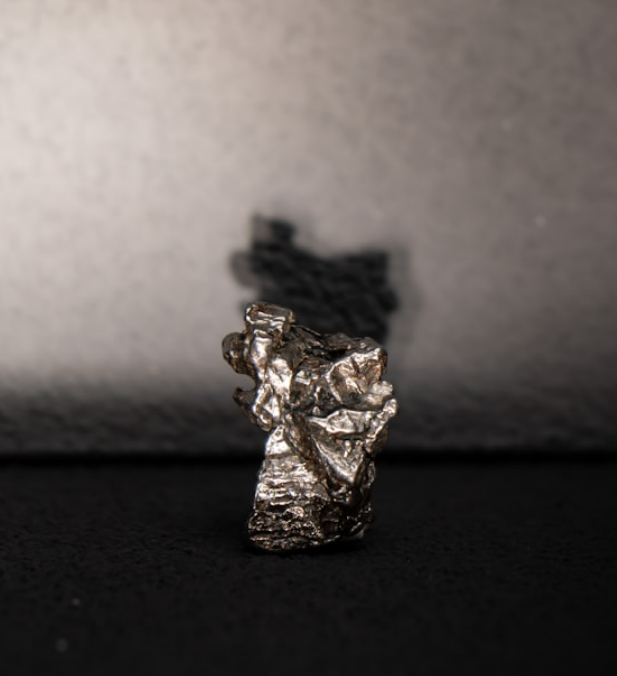Content Tablet
Titanium is a special metal known for being super strong yet light, and it doesn't rust easily. This makes it very useful in many industries, from airplanes to medical implants. But why does it cost what it does? Let's break down the main things that make titanium prices go up or down, in simple terms.

Titanium is a shiny, silver-colored metal. It's as strong as steel but much lighter (about 45% lighter!). It also resists rust and harsh chemicals very well. Plus, it's safe for the human body, which is why doctors use it for things like artificial joints. These unique features make titanium a top choice for many important uses.
Airplanes and Space: Because it's light and strong, titanium helps planes fly efficiently and spacecraft handle extreme conditions.
Medical: Its body-friendly nature makes it perfect for implants, surgical tools, and prosthetics.
Cars: High-performance cars use titanium parts to be faster and more fuel-efficient.
Other Uses: You can also find titanium in sports gear, jewelry, and even some paints (as titanium dioxide).
Many things affect how much titanium costs. Think of it like a balancing act between how much is available and how many people want it.
This is a basic rule for almost everything. If many industries suddenly need more titanium (like when more planes are being built), the price usually goes up because there's less to go around. If there's too much titanium and not enough buyers, the price might drop.
High Demand: More factories needing titanium means higher prices.
Low Demand: Less need for titanium can lead to lower prices.
Getting titanium from the ground and turning it into a usable metal is a complex and costly process. Titanium is mostly found in minerals like rutile and ilmenite. The steps to extract and purify it need a lot of energy, special machines, and skilled workers. Any changes in these costs, or problems in countries that produce a lot of titanium (like Australia or South Africa), can affect the global supply and, in turn, the price [1].
Mining Challenges: Titanium ore is often spread out and hard to get [3].
Complex Processing: Turning raw ore into pure titanium involves many difficult steps, often needing to be melted more than once in special conditions (like a vacuum) [3]. This makes it expensive.
Limited Producers: Only a few countries can produce titanium on a large scale [3].
Just like different types of wood have different prices, different types (grades) of titanium do too. Some grades are stronger, some resist rust better, and some are super pure for medical use. The purer and more specialized the titanium, the higher its price. For example, Grade 5 titanium (Ti-6Al-4V) is a strong alloy used in aerospace, while Grade 2 is a purer form used for its corrosion resistance [2].
Higher Grade/Purity: Costs more due to specific properties and processing.
Certification: Meeting strict quality standards (like ASTM, MIL, ISO) also adds to the cost [2].
The health of the global economy plays a big role. When economies are growing, industries that use titanium (like aerospace and construction) expand, leading to more demand and higher prices. During tough economic times, demand can fall, and prices might stabilize or go down. Also, if the value of one country's money changes compared to another's, it can make titanium cheaper or more expensive for international buyers [2].
Strong Economy: Usually means higher titanium prices.
Weak Economy: Can lead to lower prices.
Currency Exchange: Affects how much buyers in different countries pay.
New technologies can change titanium prices in two ways:
Cheaper Production: New methods to extract or process titanium more efficiently can lower production costs and potentially prices. For example, Japanese scientists have found new ways to produce titanium with less oxygen, which could reduce costs [4].
New Uses: When new ways to use titanium are discovered (like in 3D printing or new types of batteries), it creates more demand, which can push prices up.
Stricter environmental rules can make it more expensive to produce titanium because companies might need to invest in cleaner technologies. These extra costs can then be passed on to buyers, affecting the price. However, focusing on sustainable practices can also make titanium more appealing as an eco-friendly material [1].
Titanium isn't the only metal out there. It competes with materials like steel and aluminum. While titanium is often better, it's also more expensive. So, if steel prices go very high, some industries might switch to titanium, which can affect its price. The choice often comes down to balancing cost with how well the material performs for a specific job [1].

Titanium prices can change a lot depending on the form (raw material, finished product), grade, and market conditions. Here's a general idea:
Per Ounce: Around $0.30 to $0.50, but this can change quickly [1].
Per Pound: Typically $10 to $14 for larger amounts [1].
Per Kilogram: About $660 to $1000, especially for smaller, specialized orders [1].
These are just averages, and actual prices can vary based on who you buy from, the specific grade, and how much you need.

Looking ahead, titanium prices will continue to be shaped by new technologies, global economic changes, and how much industries need it. As new uses for titanium appear and production methods get better, its role and price in the market will keep evolving. Keeping an eye on these trends will help you understand where titanium prices are headed.
Understanding titanium prices means looking at many different things: how much is available, how much people want, how hard it is to make, the type of titanium, global money situations, new technologies, and environmental rules. By keeping these factors in mind, you can make smarter choices, whether you're buying titanium for a project or just curious about this amazing metal.
[1] "Price of titanium – Reasons for the price fluctuation." Stanford Advanced Materials, 24 July 2025, https://www.samaterials.com/content/price-of-titanium-reasons-for-the-price-fluctuation.html.
[2] "How to Price Titanium: A Comprehensive Guide." AllTi Alloys, 29 Nov. 2023, https://www.alltialloys.com/blog-posts/how-to-price-titanium-a-comprehensive-guide.
[3] "Why Is Titanium Price So High?!" Refractory Metals and Alloys, https://www.refractorymetal.org/why-is-titanium-price-so-high.html.
[4] "Titanium Made Affordable: Japanese Scientists Unveil New Low-Cost Production Method." SciTechDaily, 18 June 2024, https://scitechdaily.com/titanium-made-affordable-japanese-scientists-unveil-new-low-cost-production-method/ .